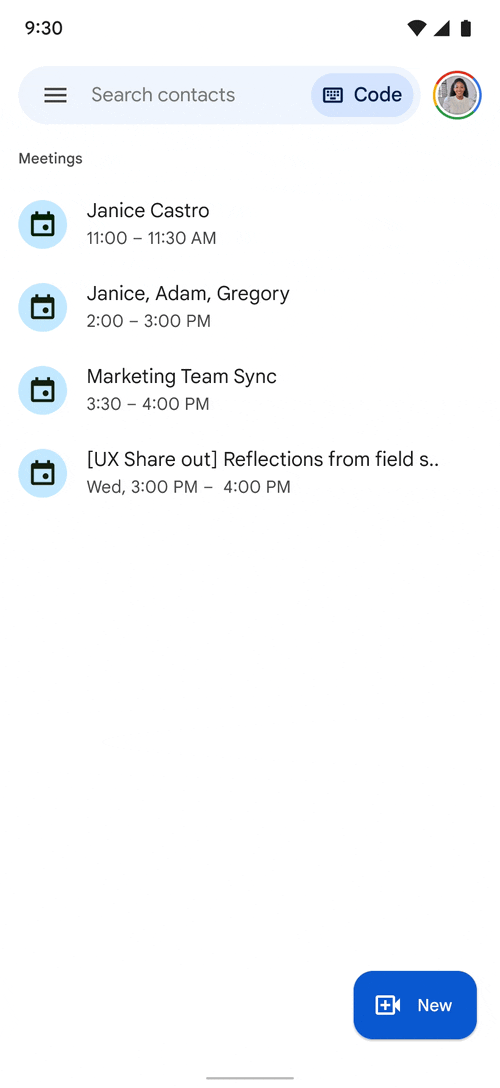3 New updates
Unless otherwise indicated, the features below are available to all Google Workspace customers, and are fully launched or in the process of rolling out. Rollouts should take no more than 15 business days to complete if launching to both Rapid and Scheduled Release at the same time. If not, each stage of rollout should take no more than 15 business days to complete.
New ways to use the Google Sheets app on iOS devices
Adding ‘Admin managed apps’ category to Google Workspace Marketplace
We’re excited to announce a new featured app category in the Marketplace:
Admin managed. These Enterprise apps can be installed only by a Google Workspace administrator for their organization. | Available now to all Google Workspace customers. | Learn more about
Featured app categories.
Bulk select in Gmail on Android and iOS devices
We’re introducing a feature that enables you to bulk select a batch of messages in the email threadlist with one tap using the Gmail app on Android and iOS devices. After clicking the select all icon, a batch of messages will be selected, enabling you to easily perform email actions such as deleting multiple messages or marking them as “read”. | This feature is available now on Android devices and is rolling out now to
Rapid Release and Scheduled Release domains on iOS devices. | Available to all Google Workspace customers and users with personal Google Accounts.
Previous announcements
The announcements below were published on the Workspace Updates blog earlier this week. Please refer to the original blog posts for complete details.
Create shareable video presentations in Google Slides
We’re introducing slides recordings, a new Google Slides feature that lets you easily record yourself presenting, and then share the presentation with others to view when it works for them. | Available to Google Workspace Business Standard, Business Plus, Enterprise Starter, Enterprise Essentials, Enterprise Essentials Plus, Enterprise Standard, Enterprise Plus and Education Plus only. | Learn more about
slides recordings.
The next evolution of automated data entry in Google Sheets
Expanding message bubbles in Google Chat to iOS devices
In September, we introduced message bubbles in Google Chat on web and Android, enabling users to more easily differentiate incoming versus outgoing messages in the Chat message stream. This week, we’re excited to announce the expansion of message bubbles to iOS devices. | Learn more about
message bubbles.
Updates to the Google Drive scanner on Android & iOS devices
We’re introducing additional enhancements to the Drive scanner on Android devices, which now powers the Google Pixel camera and includes improvements to the scanner experience when capturing content. We’re also expanding the Google Drive scanner and title suggestion feature to iOS devices. | Learn more about
Drive scanner.
Introducing a new homepage view in Google Drive
We’ve added a new streamlined homepage for Drive called Home that makes it easier and faster for you to find files that matter most. | Learn more about
Drive home.
Introducing a new mobile experience for Google Chat
Google Vault now supports Google Calendar
Google Vault now supports Calendar, which means customers can take new actions around Calendar data. | Available to Google Workspace Business Plus, Enterprise Essentials, Enterprise Essentials Plus, Enterprise Standard, Enterprise Plus, Education Standard, Education Plus customers or customers with the Vault add-on license only. | Learn more about
Vault supporting Calendar.
More insights to help admins troubleshoot Google Meet hardware issues
In 2022, we introduced
several improvements for managing Google Meet hardware devices. These improvements included surfacing additional information about device issues, such as a description of the issue, when the issue was detected, and more. Now, we’re taking these improvements one step further by providing admins with even more data points. | Learn more about
Google Meet hardware issues.
Monitor insider risk of Google Workspace data with Chronicle
Admins can now more seamlessly integrate their Google Workspace data with Chronicle (
Google’s cloud-native Security Operations platform), to quickly detect, investigate and take action on risky activity and threats. | Available to Google Workspace Enterprise Standard and Enterprise Plus customers only. | Learn more about
Chronicle.
Google Classroom now supports roster import from SIS partners
Educators can now easily import students from their student information system (SIS) to Google Classroom using
OneRoster. This integration saves educators time and helps make class setup much quicker. | Available to Education Plus and the Teaching and Learning Upgrade only. | Learn more about
roster import.
Rapid Release Domains:
Scheduled Release Domains:
Rapid and Scheduled Release Domains:




.png)









